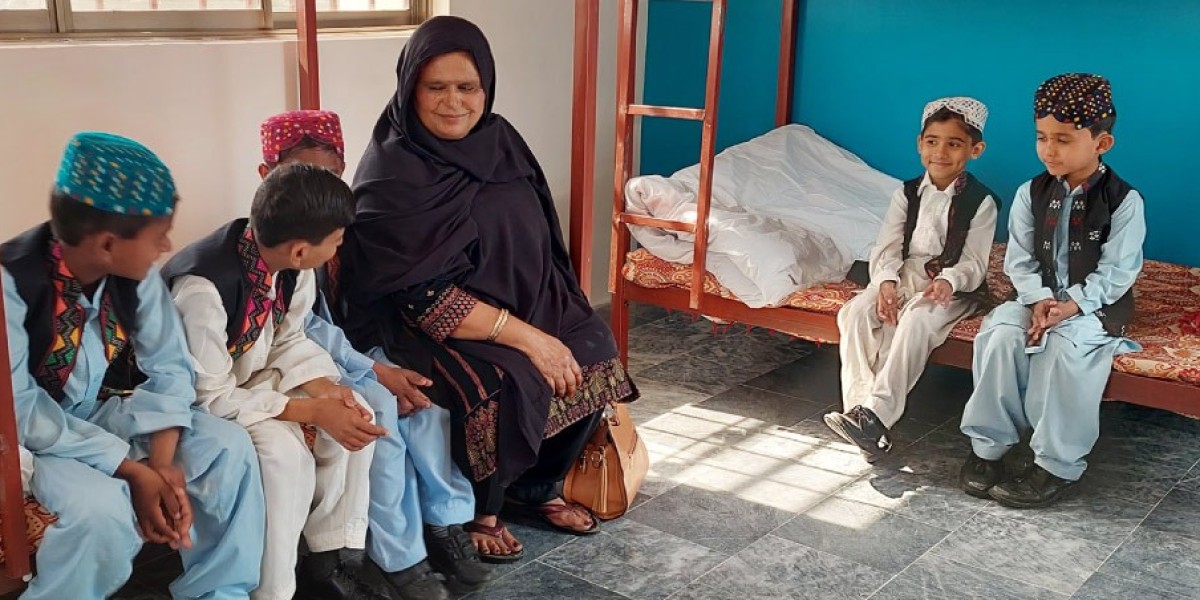Children orphanages in Pakistan serve as critical support systems for some of the country’s most vulnerable citizens—orphans, abandoned children, and those without adequate family care. In a society where poverty, conflict, and natural disasters have displaced thousands of children, orphanages step in to offer not just shelter but a sense of belonging and hope. However, the reality of orphan care in Pakistan is complex. From overcrowded institutions to lack of resources and trained caregivers, orphanages across the nation face a multitude of challenges.
This blog explores the current state of children orphanages in Pakistan, highlighting both the struggles and the successes. We also spotlight the impactful work of SOS Children’s Villages Pakistan, a leading child welfare organization that has transformed the way orphan care is delivered across the country.
Understanding the Landscape: Who Are These Children?
The term “orphan” in Pakistan is often broadly defined. According to international standards, an orphan is a child who has lost one or both parents. In Pakistan, this includes:
- Children who have lost both parents to disease, terrorism, or natural disasters.
- Abandoned children found on streets, hospitals, or public places.
- Children whose families are too poor to provide for them.
- Children subject to abuse, neglect, or exploitation.
It is estimated that there are over 4 million orphaned children in Pakistan, with only a small percentage living in registered care facilities. The rest are often left to survive on the streets or placed in the care of relatives, where the quality of life can vary drastically.
Types of Orphanages in Pakistan
1. Government-Run Orphanages
These institutions are funded and managed by the government. While the intent is noble, limited budgets, overcrowding, and lack of trained staff often lead to substandard conditions.
2. NGO-Operated Orphanages
Non-governmental organizations (NGOs) play a significant role in orphan care. Some, like SOS Children’s Villages Pakistan, offer comprehensive services including shelter, education, healthcare, and emotional support.
3. Informal or Unregistered Orphanages
Many orphanages operate without formal registration or oversight. These institutions often lack transparency, making children vulnerable to neglect, abuse, or trafficking.
Challenges Facing Children Orphanages in Pakistan
While orphanages aim to protect and nurture, many face systemic challenges that hinder their effectiveness.
1. Overcrowding
Due to high demand and limited infrastructure, many orphanages are overcrowded. Children share beds, lack personal space, and often have limited access to individual attention or psychological care.
2. Inadequate Funding
Most orphanages rely on charitable donations or inconsistent government support. This often means they struggle to provide essentials such as food, clothing, and education.
3. Lack of Trained Staff
Caregivers in many institutions are underpaid and undertrained. Without proper knowledge of child psychology, trauma recovery, and child rights, even well-intentioned staff may fall short in providing quality care.
4. Limited Educational Opportunities
Many children in orphanages attend low-quality public schools or receive inconsistent homeschooling. Without access to good education, these children are at risk of repeating the poverty cycle.
5. Emotional and Psychological Trauma
Orphaned children often suffer from emotional trauma due to loss, neglect, or abuse. Few orphanages offer counseling or mental health support to help them process these experiences.
The Importance of Moving Beyond Shelter
Merely providing shelter is no longer enough. Children need:
- Emotional stability
- Quality education
- Healthcare
- Opportunities for personal growth
- Family-like care environments
Orphanages must evolve into child development centers, with a focus on building independent, confident, and capable individuals.
A Glimmer of Hope: SOS Children’s Villages Pakistan
In a system fraught with challenges, SOS Children’s Villages Pakistan stands as a beacon of hope and reform.
Who They Are
Established in 1975, SOS Children’s Villages Pakistan is part of the global SOS Children’s Villages network, dedicated to supporting orphaned and abandoned children.
What Makes SOS Unique
1. Family-Based Care
Unlike traditional orphanages, SOS provides a family-like environment. Each child is raised in a home with a trained SOS mother and siblings, fostering emotional bonds and stability.
2. Long-Term Support
SOS doesn’t stop at childhood care. They support their children through school, college, and even into their first job, ensuring they transition into adulthood with confidence.
3. Education Focus
Children are enrolled in quality schools and are encouraged to pursue higher education. Vocational training centers also prepare older children with employable skills.
4. Healthcare Services
Each SOS Village has access to medical professionals, regular health check-ups, and psychological counseling—recognizing the full spectrum of child needs.
5. Transparency and Accountability
Donors receive regular updates, and all operations follow strict ethical and financial oversight. This builds trust and ensures sustainable support.
Community Role in Supporting Orphanages
The success of any orphanage system depends not only on institutions but also on community involvement. Every citizen can contribute:
1. Donate Regularly
Monetary support helps provide food, education, and healthcare. Donating to trusted organisations like SOS ensures your contributions make real impact.
2. Sponsor a Child
Many orphanages offer sponsorship programs, where your monthly donation supports the upbringing and education of a child.
3. Volunteer Your Time
Teachers, doctors, psychologists, and professionals from all walks of life can make a difference by offering time or services.
4. Raise Awareness
Use your voice on social media or in local communities to highlight the needs and rights of orphaned children.
5. Advocate for Policy Change
Urge lawmakers and officials to implement stronger child protection laws, increase funding, and enforce regular inspections of orphanages.
Comparing the Urban and Rural Divide
The situation of children orphanages in urban areas versus rural regions is drastically different.
Urban Areas
- Better access to resources, donors, and volunteers.
- Presence of international NGOs.
- Easier media coverage and attention.
Rural Areas
- Extremely limited infrastructure.
- Lack of trained staff and medical support.
- Greater risk of unregistered and unsafe orphanages.
- Children often face additional hardships due to cultural taboos and ignorance.
This urban-rural divide needs urgent attention, especially from policymakers and NGOs looking to expand their footprint.
The Road Ahead: What Needs to Change
Despite ongoing efforts, much work remains to be done to improve children orphanages in Pakistan.
1. National Database of Orphanages
A centralised system can help track registered and unregistered orphanages, monitor quality, and avoid duplication of services.
2. Training and Certification of Caregivers
Caregivers should be required to undergo mandatory training in child psychology, first aid, and rights-based care.
3. Increased Government Funding
The government must allocate more funds for child welfare and support NGO-led initiatives that follow best practices.
4. Public-Private Partnerships
Collaborations between the state and organisations like SOS Children’s Villages Pakistan can scale up successful models across the country.
5. Emphasis on Family Reintegration
Where possible, efforts should be made to reunite children with extended family or adoptive parents—ensuring a life outside institutional walls.
Conclusion
Children orphanages in Pakistan are more than shelters—they are sanctuaries of hope, education, and transformation. However, many are struggling to meet even the basic needs of the children they serve. From inadequate funding to emotional neglect, the challenges are real—but not insurmountable.
Organisations like SOS Children’s Villages Pakistan have shown what compassionate, structured, and long-term care can achieve. Their family-based model, focus on education, and transparent operations are paving the way for a better future for thousands of children.








